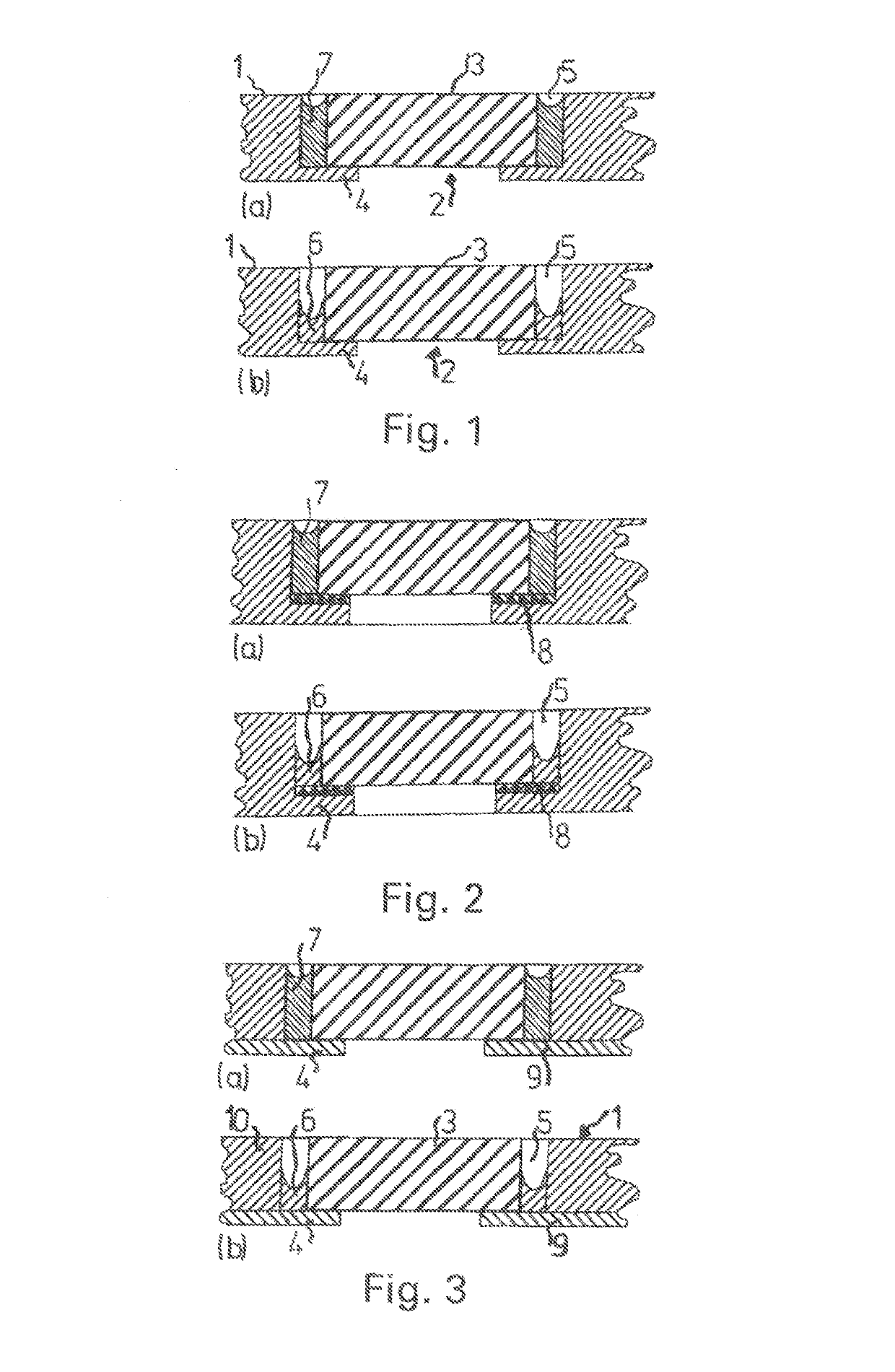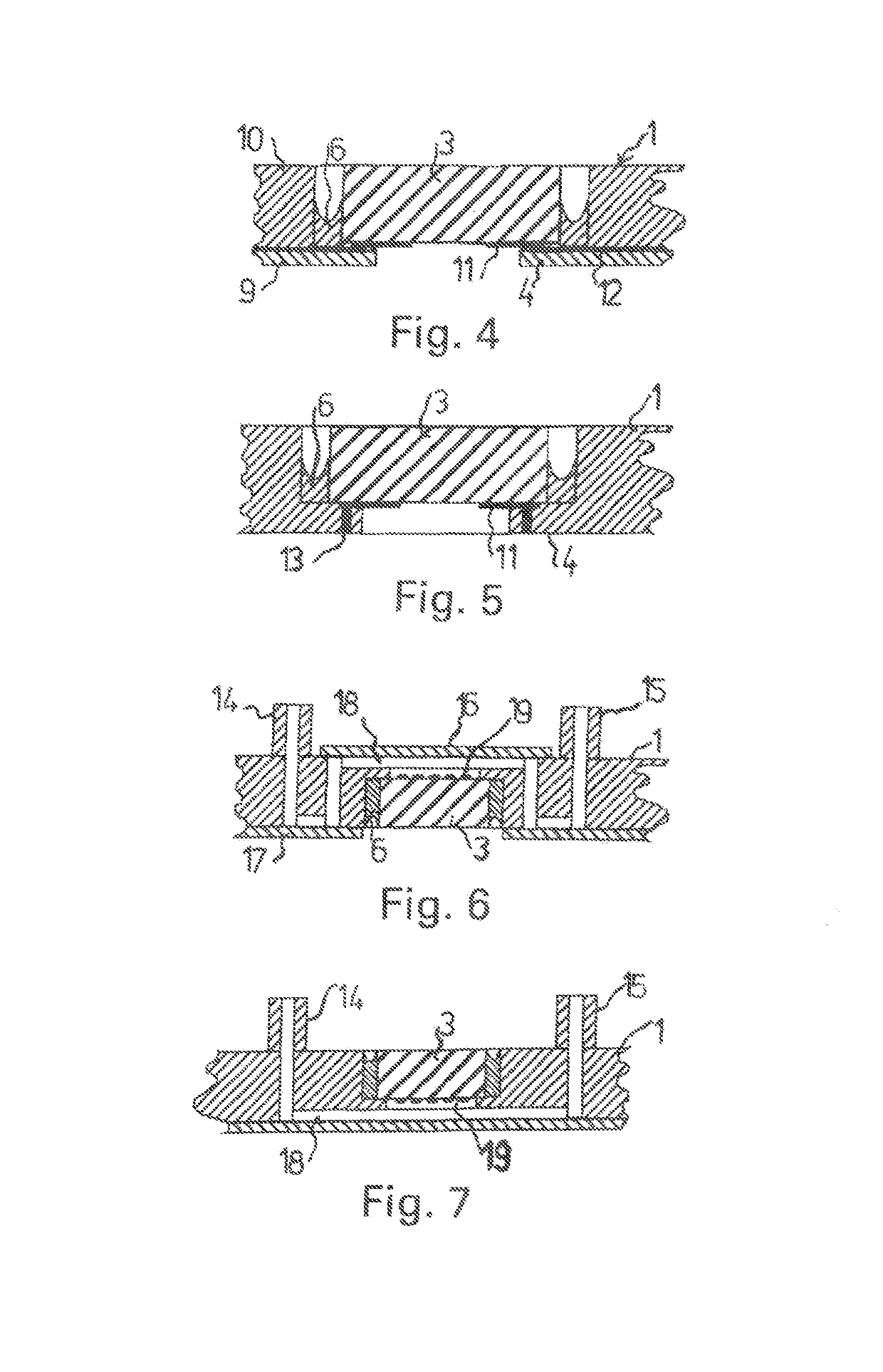Method for connecting components of a microfluidic flow cell
- Summary
- Abstract
- Description
- Claims
- Application Information
AI Technical Summary
Benefits of technology
Problems solved by technology
Method used
Image
Examples
Embodiment Construction
[0033]A microfluidic flow cell as shown partially in FIG. 1 comprises a plate-shaped carrier structure 1, which consists preferably of an amorphous plastic such as PMMA, PC, PS, COC, or COP.
[0034]A microcomponent 3—in the example shown, a component with the basic form of a circular disk or a square plate—is arranged in a pocket 2 of the carrier structure 1. The microcomponent is preferably made of silicon, but it can also be formed out of metal, ceramic, plastic, or glass with a surface which can be functionalized in various ways.
[0035]The microcomponent 3 rests on a ring-shaped shoulder 4 of the pocket 2; except for this shoulder, the pocket passes straight through the entire thickness of the carrier structure 1. An annular gap 5, formed between the carrier structure 1 and the microcomponent 3, is open on one axial side, whereas, on the other axial side, it is closed off by the ring-shaped shoulder 4 of the carrier structure 1. The width 3 of the annular gap 5 is typically in the r...
PUM
| Property | Measurement | Unit |
|---|---|---|
| Temperature | aaaaa | aaaaa |
| Thickness | aaaaa | aaaaa |
| Force | aaaaa | aaaaa |
Abstract
Description
Claims
Application Information
 Login to View More
Login to View More - R&D
- Intellectual Property
- Life Sciences
- Materials
- Tech Scout
- Unparalleled Data Quality
- Higher Quality Content
- 60% Fewer Hallucinations
Browse by: Latest US Patents, China's latest patents, Technical Efficacy Thesaurus, Application Domain, Technology Topic, Popular Technical Reports.
© 2025 PatSnap. All rights reserved.Legal|Privacy policy|Modern Slavery Act Transparency Statement|Sitemap|About US| Contact US: help@patsnap.com



